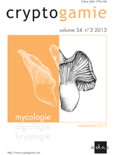
CRYPTOGAMIE MYCOLOGIE
Scope & Guideline
Pioneering Research at the Intersection of Mycology and Biodiversity
Introduction
Aims and Scopes
- Taxonomy and Phylogenetics of Fungi and Lichens:
The journal publishes research that involves the classification and phylogenetic relationships of various fungal and lichen species, often utilizing morphological, molecular, and multigene approaches. - Biodiversity and Distribution Studies:
Papers frequently explore the biodiversity of fungi and lichens across different geographical regions, contributing to knowledge about their distribution patterns and ecological roles. - Chemical Ecology and Secondary Metabolite Analysis:
Research on the secondary metabolites produced by lichenized fungi and other fungi is a core area, investigating their ecological functions and potential applications. - New Species Descriptions:
The journal is notable for the frequent introduction of new species and records, thus enriching the existing knowledge base in mycology. - Ecological and Functional Traits in Fungal Communities:
Studies that assess the ecological interactions and functional traits of fungal and lichen communities are also a significant focus, highlighting the importance of these organisms in their ecosystems.
Trending and Emerging
- Molecular Phylogenetics and Genomic Studies:
There is an increasing trend towards utilizing molecular phylogenetics to resolve taxonomic ambiguities and to understand evolutionary relationships among fungi and lichens. - Environmental and Ecological Impacts of Fungal Communities:
Emerging research is focusing on how fungal and lichen communities respond to environmental changes and their roles in ecosystem health, indicating a shift towards more applied ecological research. - Syntrophy and Interactions Between Fungi and Bacteria:
The exploration of fungal and bacterial interactions, particularly in terms of syntrophy and nutrient cycling, is becoming a prominent theme, highlighting the complexity of microbial ecosystems. - Characterization of Secondary Metabolites and Their Applications:
Research on the biological activities and potential applications of secondary metabolites from fungi, particularly lichens, is on the rise, showcasing their importance in biotechnology and pharmacology. - New Species Discoveries in Diverse Ecosystems:
The introduction of numerous new species from diverse ecosystems, particularly tropical regions, indicates a growing emphasis on documenting biodiversity in underexplored areas.
Declining or Waning
- Traditional Morphological Studies:
There appears to be a decrease in purely morphological studies without molecular support. The trend is shifting towards more integrative approaches that combine morphology with molecular data. - General Biodiversity Surveys without Specific Focus:
While biodiversity is still a key topic, general surveys lacking specific ecological or taxonomic focus are becoming less common compared to targeted studies that provide detailed insights into particular groups or regions. - Fungi in Non-Ecological Contexts:
Research focusing on fungi without ecological implications or applications is waning, as there is a growing emphasis on understanding ecological roles and interactions.
Similar Journals
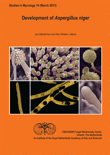
STUDIES IN MYCOLOGY
Championing Collaborative Efforts in Fungal ScienceSTUDIES IN MYCOLOGY is a premier journal dedicated to advancing research in the field of mycology, published by the renowned WESTERDIJK FUNGAL BIODIVERSITY INSTITUTE. With an impact factor that places it in the top quartile (Q1) of both Agricultural and Biological Sciences and Plant Science categories, it holds a prestigious position in the scientific community, ranking #1 out of 193 in its field as per Scopus metrics. Since its transition to Open Access in 2008, it has made significant strides in disseminating high-quality research widely, fostering a greater understanding of fungal biodiversity and its ecological impact. Covering a broad spectrum of topics related to mycology, the journal aims to provide researchers, professionals, and students with a platform for sharing innovative findings, stimulating academic discourse, and promoting collaborative efforts within this vital area of study. Hailing from the Netherlands, STUDIES IN MYCOLOGY serves as an invaluable resource for exploring the complexities of fungi, their interactions with various ecosystems, and their practical applications in agriculture and beyond.
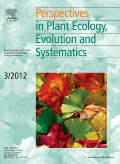
PERSPECTIVES IN PLANT ECOLOGY EVOLUTION AND SYSTEMATICS
Advancing the Frontiers of Plant SciencePERSPECTIVES IN PLANT ECOLOGY, EVOLUTION AND SYSTEMATICS is a premier scientific journal published by Elsevier GmbH, dedicated to advancing knowledge and understanding in the fields of plant ecology, evolution, and systematics. With an impressive impact factor and a solid reputation within the top quartile (Q1) of both Ecology and Plant Science categories, this journal ranks among the elite, positioned 100th out of 721 journals in its field, reflecting its significant contribution to ongoing research and academic dialogue. Established in 1998 and converging through to 2024, this journal not only serves as a crucial platform for researchers, professionals, and students alike but also emphasizes innovative methodologies and interdisciplinary approaches to address pressing environmental issues. Although it follows a traditional access model, the wealth of rigorous peer-reviewed articles available will engage the scientific community and facilitate advancements in understanding plant diversity and ecological interactions.

MYCOSCIENCE
Unraveling the Mysteries of Fungal InteractionsMYCOSCIENCE, published by the Mycological Society of Japan, is a prominent peer-reviewed journal that serves as an essential resource in the fields of ecology, evolution, behavior, and systematics, highlighted by its Q2 ranking in the 2023 category quartiles. Established in 1994 and continuing through 2024, the journal focuses on mycological research, providing insights into the interconnected worlds of fungi and their ecological roles. With an ISSN of 1340-3540 and an E-ISSN of 1618-2545, MYCOSCIENCE aims to disseminate high-quality research that addresses current issues and trends within the discipline. Despite not being an open-access journal, it makes a significant contribution to advancing fungal biology and its applications in agriculture and environmental science, making it an invaluable asset for researchers, professionals, and students alike. Located in the vibrant academic environment of Tokyo, Japan, MYCOSCIENCE stands out for its dedication to fostering a deeper understanding of mycology and its implications for biodiversity and ecosystem health.
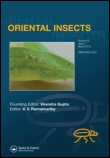
ORIENTAL INSECTS
Fostering Innovation in Entomological ResearchORIENTAL INSECTS is a distinguished journal dedicated to advancing the field of Insect Science, published by the reputable Taylor & Francis Ltd. With its long-standing history since 1967, this journal provides a platform for innovative research focused specifically on the diverse insect fauna of the Oriental region, encompassing topics such as taxonomy, ecology, physiology, and behavior. The journal is indexed with an ISSN of 0030-5316 and an E-ISSN of 2157-8745, making it easily accessible to a global audience. Although it currently does not operate under an Open Access model, its rigorous peer-review process ensures the dissemination of high-quality research. As a Q4 journal in the Insect Science category for 2023 and ranked 103 out of 181 in Scopus, ORIENTAL INSECTS remains a vital resource for researchers, professionals, and students seeking to enhance their understanding of insect biodiversity and conservation. Located in the United Kingdom, it is committed to promoting the latest scientific findings and fostering collaboration among entomologists worldwide, contributing significantly to the academic community.
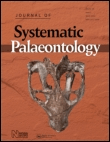
JOURNAL OF SYSTEMATIC PALAEONTOLOGY
Unveiling the Mysteries of Extinct LifeJOURNAL OF SYSTEMATIC PALAEONTOLOGY, published by Taylor & Francis Ltd in the United Kingdom, stands as a premier platform for advancing the discipline of palaeontology. With an ISSN of 1477-2019 and an E-ISSN of 1478-0941, this journal has achieved an impressive ranking of Q1 within its category for the 2023 Scopus metrics, underscoring its significance in the field. Currently ranked #10 out of 113 in Earth and Planetary Sciences – Paleontology with a remarkable 91st percentile, it serves as an essential resource for researchers, professionals, and students alike. The journal aims to publish cutting-edge research that fosters a deeper understanding of systematic palaeontology, including the evolutionary relationships and biodiversity of extinct organisms. While it operates under a traditional access model, the Journal’s expansive reach from its inception in 2003 through to 2024 ensures it continues to play a vital role in shaping the future of palaeontological studies.

NEW ZEALAND JOURNAL OF BOTANY
Illuminating the Intersection of Ecology and EvolutionThe New Zealand Journal of Botany, published by the esteemed Taylor & Francis Ltd, serves as a pivotal platform for disseminating significant research in the fields of Ecology, Evolution, Behavior and Systematics, as well as Plant Science. With a rich history dating back to 1963 and an impressive convergence extending to 2024, this journal has established itself as an essential resource for researchers and professionals dedicated to understanding the complexities of plant life and ecological systems in New Zealand and beyond. The journal is currently categorized in the Q3 quartile for both relevant disciplines as of 2023, reflecting its balanced influence within the global academic community. Although not an open access journal, it retains a significant impact factor, evidenced by its Scopus rankings, which place it within the top half of its categories. This makes it an invaluable tool for students, researchers, and academics aiming to engage with robust, peer-reviewed scientific findings and contribute to the evolving discourse surrounding botany and ecological research.

NACC-Nova Acta Cientifica Compostelana Bioloxia
Pioneering Insights into the World of Biology.NACC-Nova Acta Cientifica Compostelana Bioloxia is a pivotal academic journal published by the University of Santiago de Compostela, dedicated to advancing knowledge in the field of biological sciences. With an ISSN of 1130-9717 and an E-ISSN of 2340-0021, this journal serves as a vital platform for researchers and professionals to disseminate their findings and collaborate on key issues within the discipline. Although it currently does not offer an open access model, its relevance is underscored by its commitment to high-quality scientific rigor, making it an essential resource for students, academics, and practitioners alike. The journal aims to promote innovative research and foster the exchange of ideas in biological studies, contributing significantly to the academic community's understanding of a diverse range of biological phenomena. Its headquarters are located at the Servicio de Publicaciones e Intercambio Cientifico, Campus Univ Sur, Santiago de Compostela 15782, Spain, emphasizing its strong European roots and commitment to empowering researchers.

Zoosystematics and Evolution
Connecting researchers to the pulse of evolution.Zoosystematics and Evolution is a premier peer-reviewed journal dedicated to the fields of animal science, zoology, and evolution, published by Pensoft Publishers. With a commendable Q1 ranking in multiple categories including Animal Science and Zoology, Ecology, Evolution, Behavior and Systematics, as well as Insect Science, this journal stands out as a vital resource for researchers and professionals engaged in the dynamic study of biodiversity and systematics. Since transitioning to Open Access in 2014, it has ensured that groundbreaking research is readily available to a global audience, thus fostering collaborative advancements and facilitating the dissemination of knowledge. The journal has a significant presence in both Scopus and various academic indices, enhancing its reputation and impact within the scientific community. Based in Bulgaria, at 12 Prof Georgi Zlatarski St, Sofia, the journal continues to thrive, contributing valuable insights that drive scientific inquiry and exploration in the ever-evolving realm of zoological research.

SYDOWIA
Illuminating Pathways in Ecology and EvolutionSYDOWIA is a prestigious academic journal based in Austria, published by Verlag Ferdinand Berger Sohne Gesellschaft mbH, that has been a cornerstone of scientific publishing since its establishment in 1996. With an ISSN of 0082-0598, SYDOWIA focuses on critical research in the fields of Ecology, Evolution, Behavior and Systematics as well as Plant Science, earning a notable classification in Category Quartiles with Q3 in Ecology-related disciplines and Q2 in Plant Science for 2023. The journal’s strategic insights into agricultural and biological sciences have secured a place within the Scopus rankings, where it holds the position of #191 out of 516 in Plant Science and #278 out of 721 in Ecology categories—reflecting its growing influence with a percentile standing of 63rd and 61st, respectively. Although SYDOWIA is not an Open Access journal, it continues to thrive in delivering scholarly articles that promote advancement and innovation in ecological and botanical research. Researchers, professionals, and students alike can rely on SYDOWIA as a vital resource for disseminating knowledge and fostering exploration in these essential scientific domains.
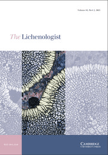
LICHENOLOGIST
Unveiling the Secrets of Lichens: Ecology, Evolution, and BeyondLICHENOLOGIST is a prestigious journal published by Cambridge University Press, dedicated to advancing the field of lichenology and promoting a deeper understanding of the ecology, evolution, and systematics of lichens. Established in 1958 and focusing on the convergence of research through 2024, this journal has established itself as a significant resource within the Q2 category of Ecology, Evolution, Behavior and Systematics. With a Scopus ranking of #316 out of 721 in its field, it highlights research that not only enhances academic knowledge but also has practical implications for ecology and conservation efforts globally. Although traditionally not an open-access journal, it provides valuable insights and contributes to the scientific community by disseminating high-quality, peer-reviewed research. LICHENOLOGIST is essential for researchers, professionals, and students looking to stay informed about the latest advancements in lichen studies, making it an indispensable resource for anyone involved in ecological and biological sciences.